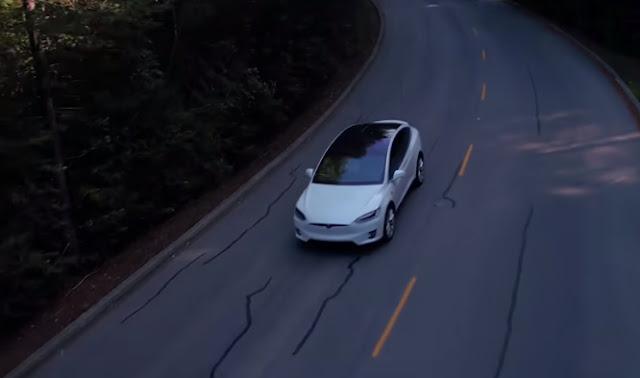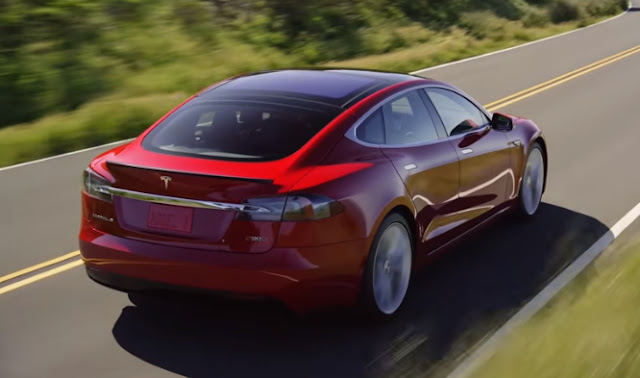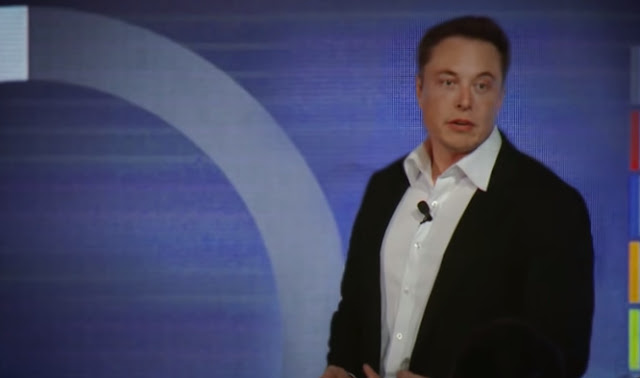Hey, I’m Steven. If you’re new, welcome. If you’re not, welcome back. The world is on the cusp of a HUGE disruption and Tesla is leading the way. If you missed the memo, Tesla is a battery and software company. Both of these core technologies go into MOST of Tesla’s products and are key to Tesla’s future AND what sets them apart. Many people mistakenly believe Tesla is a car company. This is a misread. Yes, today Tesla currently manufactures vehicles but that’s where their similarities with a traditional automaker end.
Tesla’s mission is to accelerate the worlds transition to sustainable energy. They’re attacking this challenge from multiple directions. Transport, energy generation and energy storage. And that’s just for now. Who knows what other avenues the brilliant engineering minds at Tesla will explore as they continue to execute their mission. In this video, ahead of Tesla’s Battery Investor Day where I expect we’ll hear more, I’m explaining why Tesla batteries will both make--and SAVE--billions. We’ll look at vehicle-to-grid, big batteries, virtual power plants and more. As a tesla investor, this is very exciting. Batteries aren’t sexy so it’s easy to overlook Tesla’s energy business but do so at your own peril.
Hey guys.
We bull have a great offer. If you’d like to get free stock valued up to $1400 and help out the channel, use the link in the description. I mean, free stock.
Declining Costs I’m still astonished at how few Wall St analysis and members of the finance media acknowledge the declining cost curves being ridden by the two most expensive items in Tesla vehicles. Number one: The battery. And two: in distant second place, the computer. It’s difficult not to claw out my eyeballs when I hear statements of world-class ignorance like “Tesla will never make a $25,000 car” or that “Tesla’s are for rich people”.
All that we need do is fire up our neurons, look at some data and infer what the future looks like. Today the battery in a Tesla is roughly $100 per kilowatt hour. e.g. a 100 kilowatt battery costs roughly $10,000. But history shows a steady battery cost decline of around 15-20% per year. Fast forward 4 years and that same pack will cost HALF as much. $5,000 saved, like that. And then there’s the self-driving computer. Tesla shocked the world in 2019 by announcing it was ditching NVIDA’s chip in favor of one they had designed in house which was far superior, 20% cheaper and incredibly, Tesla also confirmed they were already working on ITS successor at the time.

Tesla will continue to find many new cost efficiencies through improved manufacturing processes, vertical integration, economies of scale etc. As this happens, it’s inevitable that the cost to produce their vehicles will fall continually over time JUST from the fact the two most expensive pieces of hardware are riding declining cost curves toward zero. This means either higher margins, lower prices for consumers, or both.
Lower prices means a larger market for Tesla vehicles and their stationary battery storage. This is such an important point I’m going to restate it. The most expensive components in most of Tesla’s products are riding declining cost curves. This will expand their market (and margins) enormously over time. Guess what isn’t riding declining cost curves?
Internal combustion engines and fossil fuel energy sources. Keep that in mind. Research, Innovation Acquisitions Tesla isn’t standing still. They’re an optimization machine. We’ve seen incredible improvements at every level from corporate structure and factory design to materials and manufacturing processes. Tesla has strategic research partnerships with the likes of Jeff Dahn in relation to a million mile battery. Tesla has shown a willingness to acquire companies such as Maxwell Technologies who are battery experts and Hibar Systems who are experts in battery manufacturing. The point here is simple.
Tesla, through their ACTIONS, are showing clearly that they are BENT on remaining light-years ahead of everyone else. In my Battery Investor Day Preview video which I’ll link in the description, I made many predictions.
The most notably being Tesla will announce plans to manufacture their own battery cells. This will dramatically reduce costs. The key to winning EVs is great software and the best batteries. Tesla has both and shows no signs of slowing.
Software Is Eating The World Have you noticed?
Software is causing physical things to dematerialize.
I used to have a bookshelf full of books, another full of CDs and DVDs.
I once owned a stereo system.
I also owned a flashlight.
And a calculator.
And a camera.
And an encyclopedia.
And a dictionary.
And portable CD player.
Today all of those things and more have dematerialized and are easily carried in my pocket on a single device: my smartphone. Take one look at the dash of a Tesla and you’ll see ten million knobs and dials replaced by software and one elegant screen. And now, software is starting to eat our power generation and supply too. Horns dale Power Reserve Time for a quick primer in power. This is a simplified example so don’t get your panties in a twist.
he electrical grid today is kind of dumb. Power has to be generated on demand. If lots of people arrive home from work in summer and crank their air conditioning, power usage (and therefore COST) goes through the roof. To meet this demand, a bunch of filthy, expensive “peaker plants” come on to deliver “peak power” as it’s needed. This made sense before batteries. But we have batteries now. And it’s already FAR cheaper to build renewable energy sources with battery storage than a new fossil fuel power plant.
YES, really. We’re at an inflection point. Mark my words. The 2020s are the decade of battery storage. Currently the world’s largest lithium-ion battery, the Horns dale Power Reserve is a brilliant case study in how Tesla’s batteries and software will make and save billions, allowing Tesla to eat the lunch of power plants and utilities the world over.
Despite being mocked by Australia’s Prime minister Scott Moro son (I’m not sure if I said his name correctly)... the Horns dale Power Reserve proved to be a genius move. Basically, a bunch of Tesla batteries were installed to store excess wind power for later distribution and to stabilize the power grid following a devastating blackout. The big battery has made and saved millions and stabilized the grid, stepping in multiple times when needed.
It’s payback period is estimated to be just 4.5 years. This case study was enough for the world to take notice, and they have. Becoming A Distributed Global Utility Tesla is becoming a distributed global utility.
What exactly does this mean?

In layman’s terms, Tesla will be slowly eating the lunch of utilities around the world. We’ll go deeper on this in a moment but for now, just imagine it’s 2030. Tens of millions of homes around the world generate power with Tesla solar and store it with their Tesla Power wall, collectively savings billions. Which also means billions less revenue for utility companies. In many of these locations, more power is generated than is used. So where does this excess power go?
Glad you asked. Virtual Power Plants South Australia, home to the Horns dale Power Reserve, is also the location of a pilot program called the South Australia Virtual Power Plant. Currently, just over 1,000 homes out of a proposed 50,000 house solar and a Tesla power wall and have opted-in to the virtual power plant. Excess energy is stored in batteries and controlled by Tesla’s software.
Should energy demand spike and the grid find itself in need of power urgently, the virtual power plant kicks in and supplies what is needed. Even at just 2% of its final scale, the South Australia Virtual Power Plant has already kicked in to avoid blackouts and prevent peaker plants firing up saving millions. Virtual power plants can also perform energy arbitrage, dynamically drawing power when energy costs are low and serving it back during peak periods when costs are high.
The potential here is ridiculous. Battery and solar costs are declining. In the future, more and more people will live in homes featuring both, forming virtual power plants and earning a little income for their trouble. Talk about printing money. Actually, speaking of printing money. Auto bidder A few weeks ago, Tesla’s auto bidder software became public knowledge. We learned it was controlling the South Australia Virtual Power Plant. Remember in the intro I said Tesla was a battery and software company?
Well, Audobidder is a huge software flex from Tesla. Let’s read it in their own words: “Auto bidder provides independent power producers, utilities and capital partners the ability to autonomously monetize battery assets. Auto bidder is a real-time trading and control platform that provides value-based asset management and portfolio optimization, enabling owners and operators to configure operational strategies that maximize revenue according to their business objectives and risk preferences. Auto bidder is successfully operating at Horns dale Power Reserve in South Australia, and through market bidding, has added competition to drive down energy prices” In a nutshell, if you have big batteries, Tesla’s Auto bidder can print you money. Out of thin air. And they don’t even need to be Tesla batteries. Pretty cool huh? Vehicle To Grid And now we get to the juicy part. Vehicle to grid!
Imagine if your Tesla could become part of a virtual power plant and earn you a little money. Sounds simple right?
Store energy in your Tesla battery. Distribute it to the grid when needed and get paid for your trouble. The problem is, charging and discharging lithium ion batteries causes degradation. Being part of a virtual power plant would dramatically shorten the useful lifespan of your battery due to all the extra charging cycles. Enter the million-mile battery. Rumors have now become almost certainly. The lab of Tesla research partner Jeff Dahn appears to have developed a million-mile battery.
What this really means is a battery that can be charged and discharged repeatedly with very little degradation. Suddenly the prospect of your Tesla becoming part of a virtual power plant, powered by Audobidder, is real. Remember, the South Australia Virtual Power Plant with a mere 1,000 batteries (2% of its final scale), has proven itself to be as effective as it is lucrative. Imagine a global distributed utility comprised of millions of Teslas.
Making money for their owners while they sleep. This is another example of Tesla printing billions out of thin air. This is a pure software play. Nothing at all needs to change about the hardware in a Tesla to enable vehicle-to-grid. It’s just a matter of code. Mega pack Equals Mega Revenue As I said earlier, today, on balance, it’s cheaper to build a renewable power plant with battery storage than a fossil fuel plant. And it’s better for the environment. Win-win.
Tesla’s recently-released Mega pack is a grid-scale battery solution that is seeing increasing demand from large-scale commercial energy users, utilities and more. When you run the numbers as either of these entities, it’s financially INSANE not to include large-scale battery storage. This was NOT the case only a few years ago and that’s the point. Battery costs are declining over time with no end in sight. If it’s crazy today not to use batteries, imagine in 5 years when a Mega pack will cost about HALF what it does today. As for competition. Well, in Tesla’s own words:
At the site level, Mega pack requires 40% less space and 10x fewer parts than current systems on the market. It’s hard to argue with that. Space saved is money saved. Complexity is the devil and time is money. Win, win, win. Don’t sleep on Tesla Mega pack. Battery Recycling, Remanufacturing and Reuse So what does a million-mile battery really mean?
Basically, after 1 million miles driven (or the equivalent numbers of charge/discharge cycles), the battery capacity has degraded close to 10%. Not the end of the world. Your 400 mile range vehicle now gets 360 miles per charge.
Should you choose to replace your current battery, what happens to it? Well, throwing it out would be stupid since it still holds 90% of its original capacity. But it would make a great option for use in stationary energy storage. This is where recycling comes into play. Companies like Redwood materials, founded bytes LA’s ex-CTO JB Stable are moving the needle forward.
In the future, we’ll see vehicle batteries sold to recycling companies who will remanufacture products like big batteries. Further down the food chain, toward the end of their useful life, batteries will be recycled for the valuable materials they contain. It’s too early to tell how this will go down. Will customers selling unwanted batteries make a few dollars or thousands?
I don’t know. But in either case, the battery recycling market is set to explode as batteries and electric vehicles take over the world. There are billions to be made. The Numbers It wouldn’t be a video about making billions without actually looking at some numbers. So let’s do exactly that. Keep in mind, these are just back of the napkin examples so you have a template to work with in your mind. I pulled them from my ass. Use your own numbers. I’m making a point, not a prediction. We know that Tesla sells at least one power wall to 40% of its solar customers.

Tesla is aiming to reach production of over 10,000 solar glass roofs per week. This doesn’t include solar panels. Call it 500,000 per year. If 40% of those customers buy a Power wall that’s 200,000 Powerwalks at $6,500 each. $1.3 billion in revenue. PER YEAR. Just from solar customers who ALSO buy a Power wall. Then we have the Mega pack whose demand is already outstripping supply. This is where I see most of Tesla’s energy storage revenue coming from in the near term.
Mega pack pricing is a mystery to me. If anyone knows anything, let me know in the comments. Keep in mind, Tesla quotes per customer based on their needs, setup and installation. A Mega pack stores well over 200 times as much energy as Power wall. Let’s assume a mega pack costs 100 times as much as a Power wall. That’s $650,000 per Mega pack. If Tesla sells 2,000 Mega packs per year that’s another $1.3 billion in revenue.
Then what about Tesla’s cut of virtual power plants, vehicle-to-grid and auto bidder software?
Again, I have no numbers to work with but we do know Tesla’s vehicle fleet today is over 1 million. And they’ve installed over 100,000 power walls. Let’s imagine 1 million instances in which Tesla takes a cut of vehicle-to-grid, virtual power plants etc. And say that cut is $25/month. That’s another $300 million per year in revenue!
But what about the money Tesla saves and makes these customers? We’ve seen insane returns on the Horns dale Power Reserve and the incredible impact of South Australia’s Virtual Power Plant on the back of Teslas Auto bidder software and it’ early days. And what about recycling?
Again, this is an unknown but someone in the future will want to buy your Tesla battery for use in stationery storage. I hope in this video, I’ve shown that Tesla’s batteries (coupled with their software expertise) will make billions for Tesla and billions for Tesla’s retail and commercial customers by enabling vehicle-to-grid, virtual power plants and insane energy arbitrage. Everyone wins. Tesla, its customers and the planet.
Tesla’s Batteries and Software are hidden in the background but destined to make BILLIONS. The Auto bidder software ALONE could bring in billions of annual profits for Tela by helping those with energy storage monetize their battery assets. Never mind the revenue on the sale of Tesla’s own batteries. Once again I must reiterate. Battery costs are declining over time. Cheaper batteries equals a bigger market and faster payback time. Today, it’s already cheaper to build a renewable energy plus battery storage combo than a traditional fossil fuel plant.
And it’s only getting cheaper. Fossil fuels are fucked. Peaker plants are dead. Utilities are being disrupted. Energy generation and storage is being democratized and Tesla looks poised to become the world’s largest distributed utility.



